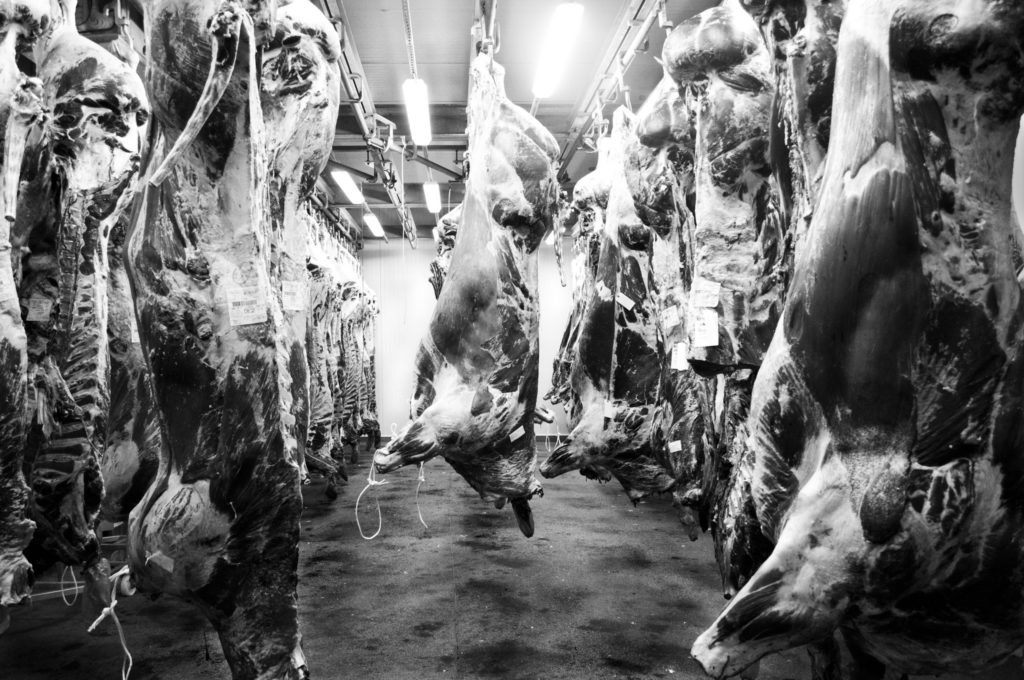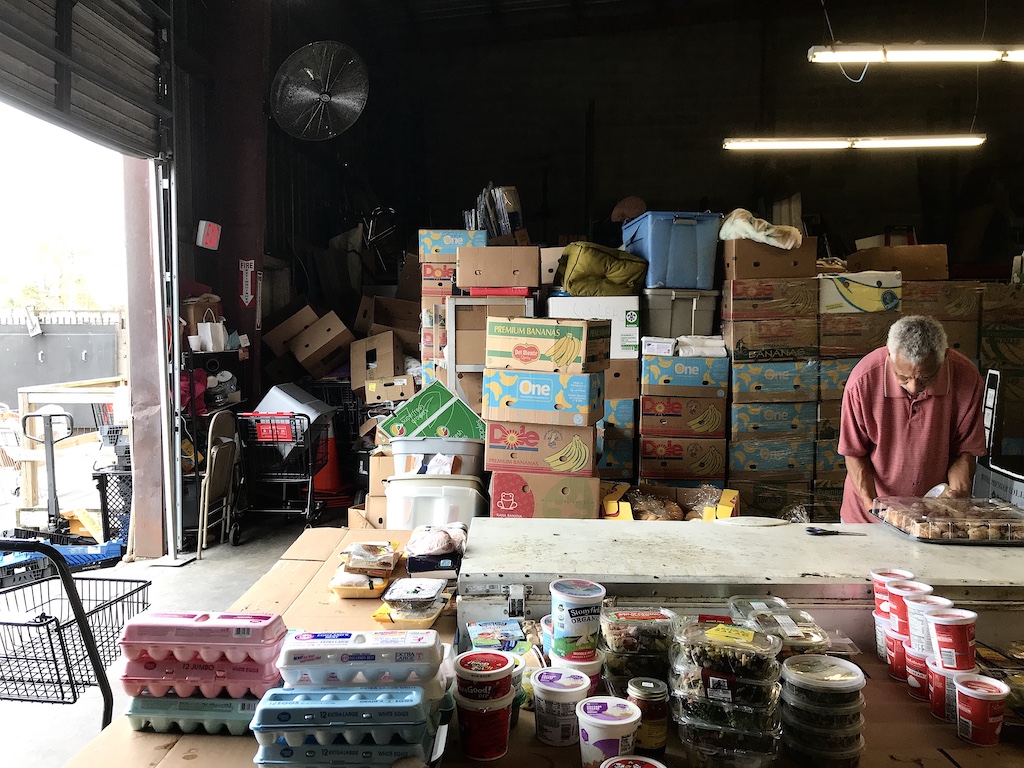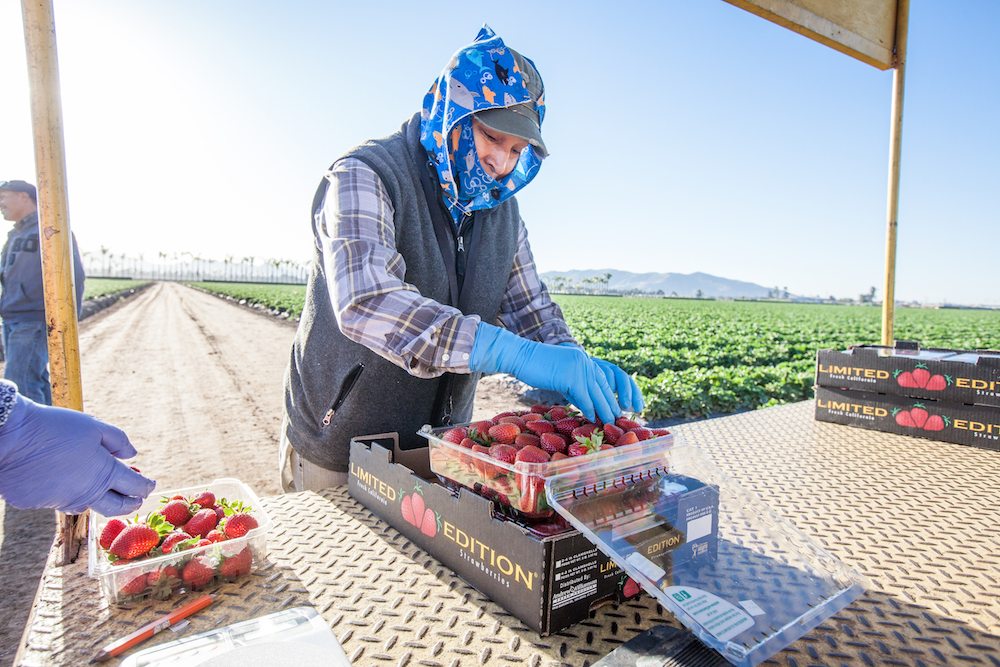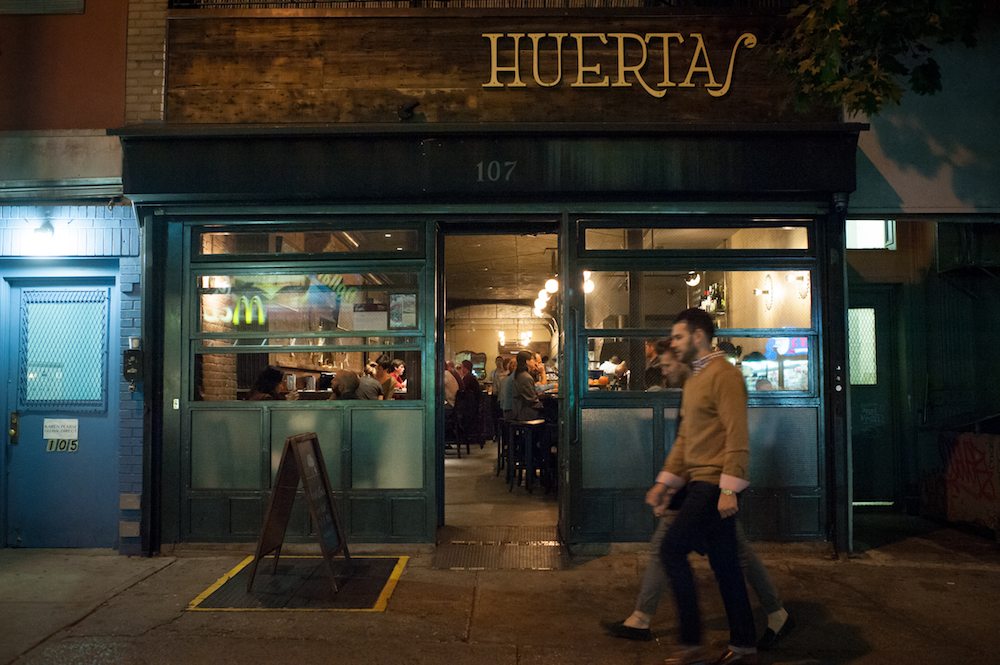
Nancy Borowick
We also published an excerpt from Karen Stabiner’s book Generation Chef. Read it here.
In the fall of 2013, author and journalist Karen Stabiner sat down with chef Jonah Miller in New York City’s Union Square Park. She arrived armed with a book idea she calls “absolutely naïve,” and was prepared to talk to Miller—and probably 10 other chefs just like him—about that idea before she found one who responded with interest.
Stabiner is a lifelong restaurant observer. But not of the foodstruck, plate-gazing kind. She was weaned on commercial kitchen culture. That’s where all the good stories are.
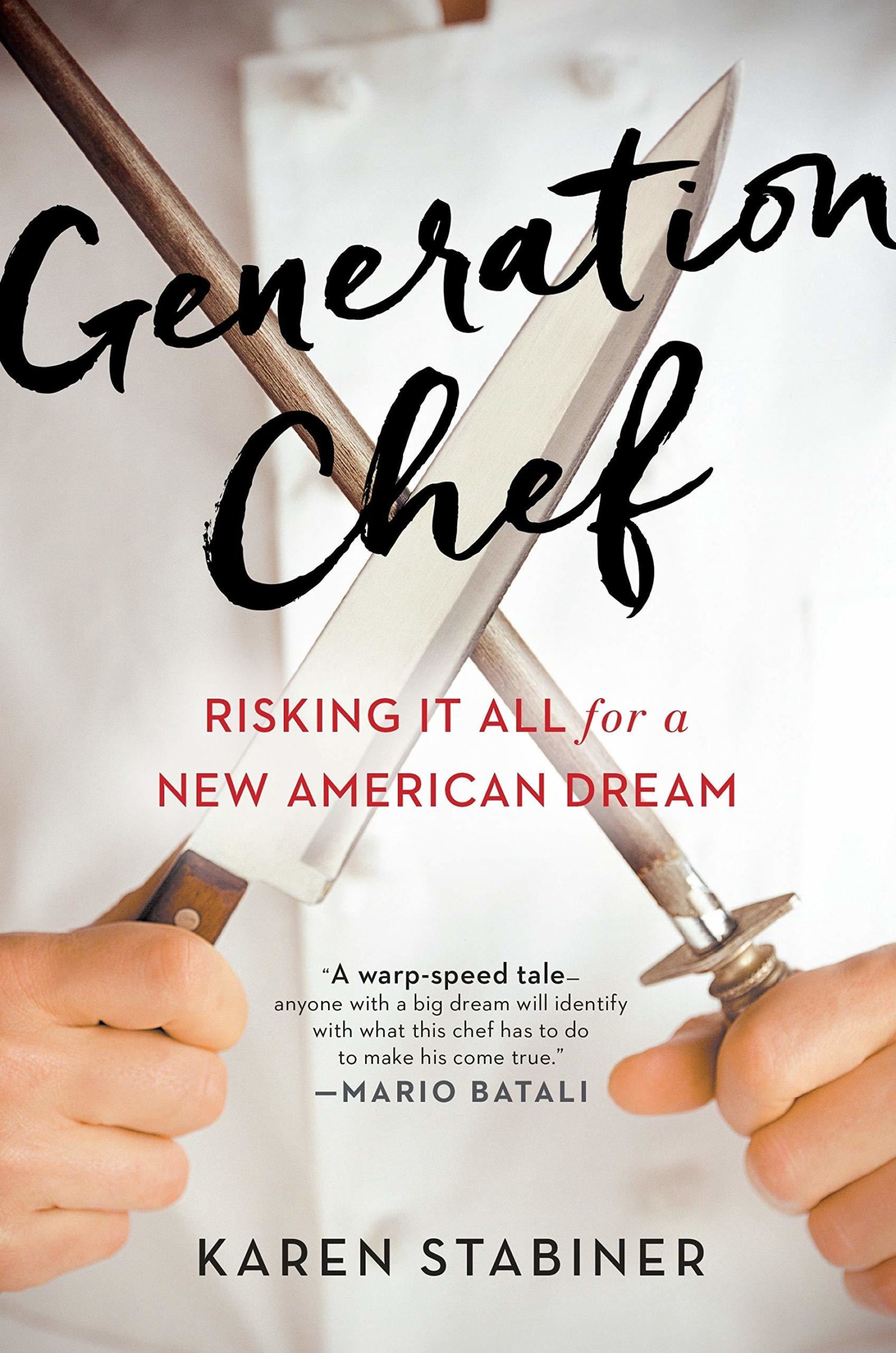
Avery
“My family had a little restaurant supply company in Chicago,” she says. “So, I grew up in dark restaurants on a Saturday afternoon while my father was selling stock pots. But I saw something then that most people don’t see—I got to see backstage. And I loved it because it was so different from the suburb where I was growing up, it was like traveling. Other families might have gone across the country. I went to the back of a restaurant and met all these really interesting people who were nothing like me.”
The book idea she went to discuss with Miller that day had started to gel while she was working on another one, Family Table, a cookbook of staff meal recipes and about 30 short stories of the backstage family, from line cooks, to the guy who buys Gramercy Tavern’s produce, to servers at New York restaurateur Danny Meyer’s group of restaurants.
“You’d look around the kitchen. I would say the average age was 23, 24, except for a couple of lifers. They were all in a hurry. There’s sort of that one-year-and-out rule: ‘If I don’t see a step up for myself in a year, I’ve got to move.’ There was all this chatter about ‘if you don’t have your own restaurant by the time you’re 30 you’re never going to have one,’” Stabiner says.
“I thought to myself, ‘Huh, this is different from the way it used to be.’ An older chef, in fact, said to me, ‘the days of the white male militaristic kitchen are over.’ It’s much more of a melting pot. It’s not where it needs to be yet, but it’s much more democratic than it used to be. The pace has changed. Everything has changed.”
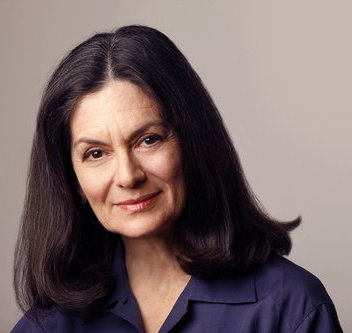
Karen Stabiner
Stabiner wanted to spend a year watching this new kind of chef start up and run this new kind of kitchen. She needed to find a chef who’d let her do that, and she needed one who was going to do okay. “I didn’t need them to be the next Mario Batali or Tom Colicchio, but I certainly needed them not to go out of business,” she says.
It was a gamble, pinning a book proposal to a young chef’s first year in his or her own restaurant. “I would ask people in the industry who’d been around for a while and say, ‘Who’s a likely candidate? Who’s done his or her homework, knows what they’re doing?’ Jonah’s name came up more than once.”
Miller met Stabiner at the park armed with an idea of his own. Inside his backpack, sketched out on paper, was his dream restaurant, Huertas, a Basque place where he’d serve one-bite pintxos appetizers, Spanish beers and wines, tins of Spanish seafood, and a menu del dia (four courses, from pintxos through dessert).
https://www.instagram.com/p/BKT90ZNjCyh/?utm_source=ig_embed
Miller hadn’t secured a space when he met Stabiner, but he had a drawing of what he wanted Huertas to look like, a business plan, and some sample menus. He was twenty-six years old and had never owned a restaurant. “I told him what I wanted to do and he said yes,” Stabiner says. “We both just sort of sat there, then, waiting for one of us to have second thoughts, and we didn’t.”
Generation Chef: Risking It All for a New American Dream, released last month by Avery Books (a division of Penguin Random House), is the story of Huertas’ first year—from build-out, to brunch service, to branding crisis—and brings the reader up to its second anniversary. It’s also Miller and company’s story, told through the lens of a generational shift in the way chefs feed people and the way Americans eat.
The model pioneered by name chefs who came before Miller (chefs like David Waltuck of New York City’s fine-dining stalwart, Chanterelle, who played a key role in Miller’s trajectory) is no more. As Stabiner reveals in her interview with me, restaurants are now powered by young chefs who are planning for their second restaurant before their first one has been open a year, and eaters whose attention span is about as long as it takes to eat a pintxo.
This interview has been edited for clarity and length.
KC:
Before you and Miller met, he had already been cooking professionally as a sous chef at Danny Meyer’s Maialino. But he quit that job at the age of twenty-four, to open Huertas, which he did in part because he wasn’t convinced he needed to follow the traditional path to ownership: being an executive chef at someone else’s restaurant first. Miller seems emblematic of this new generation of chefs you’d encountered in your other work, but what else made you want to tell his story?
KS:
He’s really talented. He’s been cooking forever and he’s been cooking professionally since he was 14. So he had a good resume and I liked the kitchen. Not the physical kitchen. I liked the kitchen family.
KC:
The book is also very much about a whole new cast of characters risking it all in restaurant kitchens.
KS:
I wouldn’t have wanted to write about a kitchen full of young, well-educated lucky white guys, because that’s not today’s kitchen. I wanted people with different stories to tell. I looked at his lineup and it’s Jonah, and then it’s Jenni Cianci, Miller’s sous chef, who went through CIA for two years on the West Coast, came to New York for her externship, because she thought, “I’m never going to live in New York, I’m never going to work in New York, and I’m going to come back and open something near my folks in Northern California, so I might as well go for it and have my externship in the hottest market in the country.” She took an offer at Maialino, which was paying her less than another offer, but was the place she wanted to work. At the end of the externship, they offered her a job, and, as she says in the book, everybody sat her down and said, “Don’t go back. You went to CIA to get the job of your dreams. This is the job of your dreams. Why would you want to spend another $30,000 in tuition to get exactly this job?”
Then there was Joe, the extern, who sort of fell into a job when somebody else quit, and was in a little bit over his head, but dug in and did it.
There was Lance Hester-Bay, the dishwasher, who took the job telling Jonah that he would take it only if Jonah would give him a chance to work up into a kitchen job.
Alberto Obando was not there yet, but he turned into another story about people who can’t afford culinary school, win a contest and get a scholarship, and come at it that way. He’s an even younger Jonah than Jonah was.
Then there was Alyssa Campos, who stepped in to help out and ended up staying until she had to move back in with her mom because she couldn’t retire her culinary school debt.
Each one of them had a different story to tell. Some of them wanted to open their own places someday, like Jenni. Some of them really never wanted to open their own places, they just wanted to work for a great company and have more and more responsibility there.
https://www.instagram.com/p/BJdsjO8jCF-/?utm_source=ig_embed
KC:
Spinning just outside the harrowing microcosm of first-year Huertas, is a whole other whirlwind of chefs and restaurants who are also navigating some uncharted territory. What part do they play?
KS:
Jonah’s the central story but he lives in a universe of people who are trying to do it differently. David Waltuck, from Chanterelle was also opening a new restaurant just a few months after Jonah. I also got Stephanie Izard, who had had one failed restaurant when she won Top Chef, which changed her life entirely, so that was sort of an organic way to look at the phenomenon of Food TV.
Then I had Gavin Kaysen, who’s on the Bocuse d’Or team, and had worked for Daniel Boulud forever. Everybody was waiting for Gavin to open his restaurant. He decided that the path to happiness was to leave New York, because the market was going to get in the way of what he wanted to do, which is so tough. He went back home to Minneapolis and opened a wildly successful restaurant for about a third of what it cost Jonah.
Those three other stories, in addition to reporting from Tom Colicchio and Danny Meyer and people like that who were part of this whole trend—or are the mentors to the people who are involved in this latest trend—made it a really full story.
https://www.instagram.com/p/BLec88KDX7u/?utm_source=ig_embed
KC:
Reporting from the field is one thing, but field reporting in a slammed commercial kitchen, with sources who work 90-hour weeks, is another. Tell me what that year was like.
KS:
It’s so low-tech. I’m a fly on the wall. That’s what I do for a living. I love it. Someone said to me, “are you a journalist or a writer or anthropologist?” I said, “I don’t know.” I like to watch the world go by. I like to write about families at work.
I stood about three feet from Jonah whenever I could be there and just wrote and listened. And then I would come in during the daytime hours and catch up with everybody. If [New York Times critic] Pete Wells walked in on a given night, I would come in the next day and sit down with Jonah and rehash the whole thing with him. Or if there had been an argument between Jonah and one of the partners, I would come in the next day and talk to everybody and get everybody’s point of view on it.
KC:
You mentioned Wells. It’s hard to overstate the impact that his visit and subsequent New York Times review had on Huertas’ fate in that first year. But Miller and company are also dealing with another core drama throughout the narrative–the constant questioning over whether to keep or trash the menu del dia, which Wells said “ranks among the best deals in town.” They eventually trash it. To what extent do you think a chef-owner has real control over the outcome of any of those factors?
KS:
In the baseball novel “Bang the Drum Slowly”, when the team was on the road, they would play this card game called TEGWAR, which stood for The Exciting Game Without Any Rules. I thought about that game the whole time I was working on this book. This is the exciting game without any rules.
I was talking to some nice person who said, “why hasn’t anybody ever written this book before, because it’s true!” I said, “Well, I think we are in love with that notion of enormous success. Everybody wants to be a marquee person, but the reality of the restaurant business is this, is Huertas. There are good weeks. There are bad weeks. You die for a reviewer to walk in the door, and then when they do you have a nervous breakdown for four weeks. Then when the review comes out, suddenly you’re turning people away. Then you have to figure out how to sustain that.
https://www.instagram.com/p/BLuFThEjTGR/?utm_source=ig_embed
KC:
There’s been much discussion over the last few years about the death of the single-restaurant model. Perhaps that ignited ownership hunger in some of these chefs. But what’s the thinking behind this push toward owning multiple restaurants?
KS:
One of the reasons they work is that you have a bigger talent pool. If a sous chef quits at restaurant number one, maybe you can borrow a really promising line cook from restaurant number four, rather than having to scramble or hire somebody that’s not exactly right, or step in yourself and be working 90 hours a week again.
If you’ve got more than one restaurant, you don’t have to duplicate every job at every restaurant. If you have an HR person, you probably don’t need one at every single restaurant. That improves your position. Maybe one of your four restaurants is in a beautiful location with outdoor seating and it’s just raking in money at brunch. That compensates for one of the things that drove Jonah crazy, which is he did not have an outdoor space
KC:
To some degree, setting up shop in New York City’s East Village, building out, scaling up–those are immoveable, brutal realities that haven’t seemed to change much. But we as eaters certainly have.
KS:
It’s not a friendly time for the independent full-service restaurant. It just isn’t. Social media and food television have picked up the pace and made too many of us restaurant chasers. What restaurateurs are facing in terms of where they do business, how they do business, what kind of business they do, how you get into this for the long haul, and what the definition of stability—forget success—is, is just completely different from what it was for the previous generation.
They’re the pioneers.

